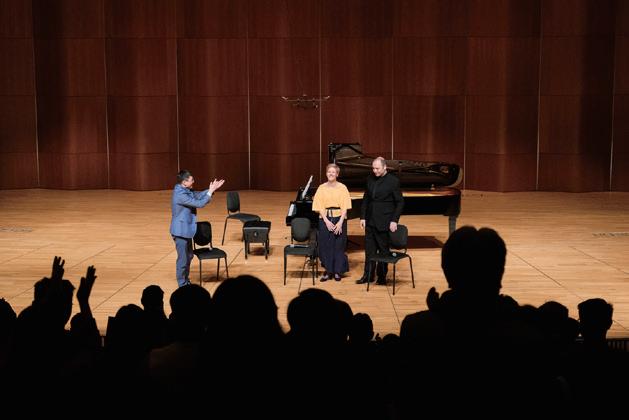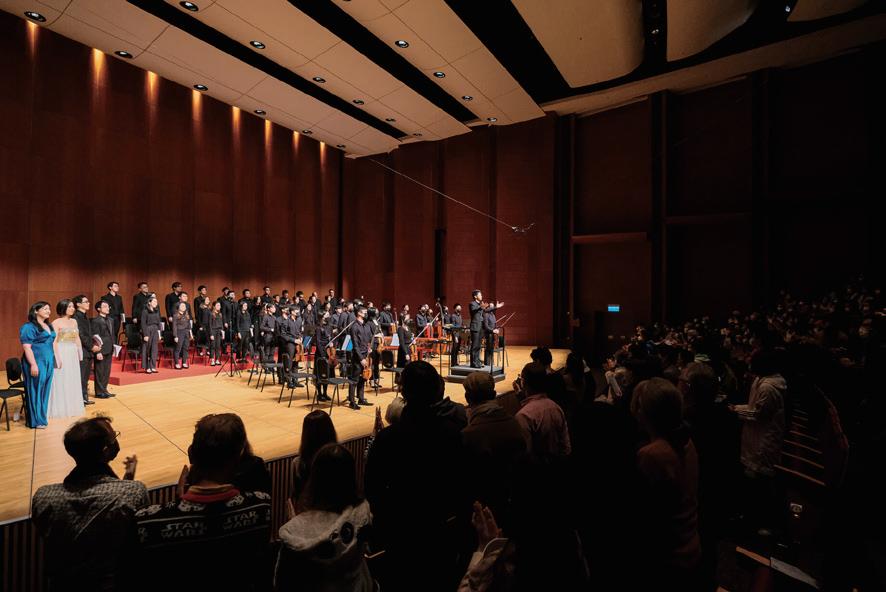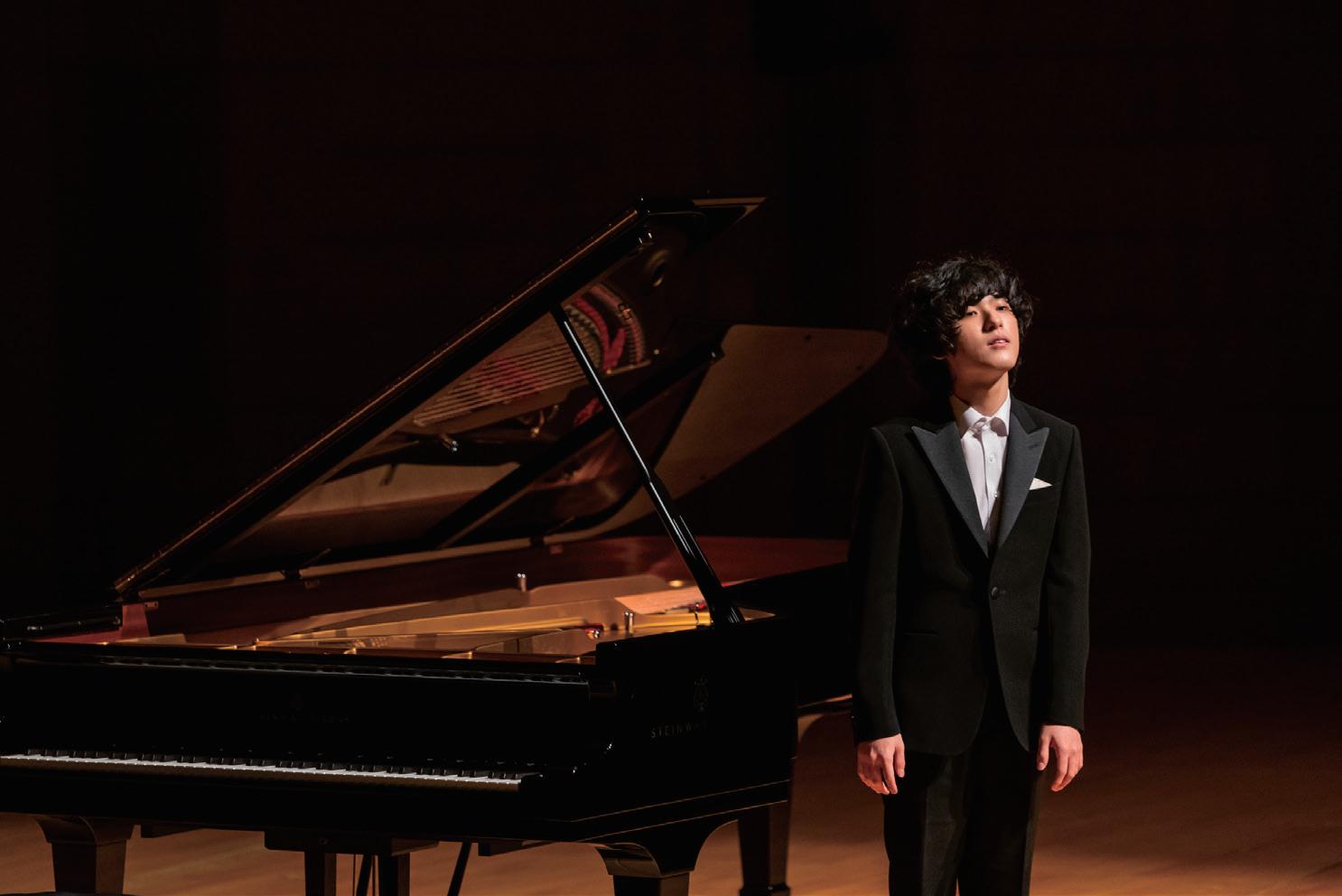
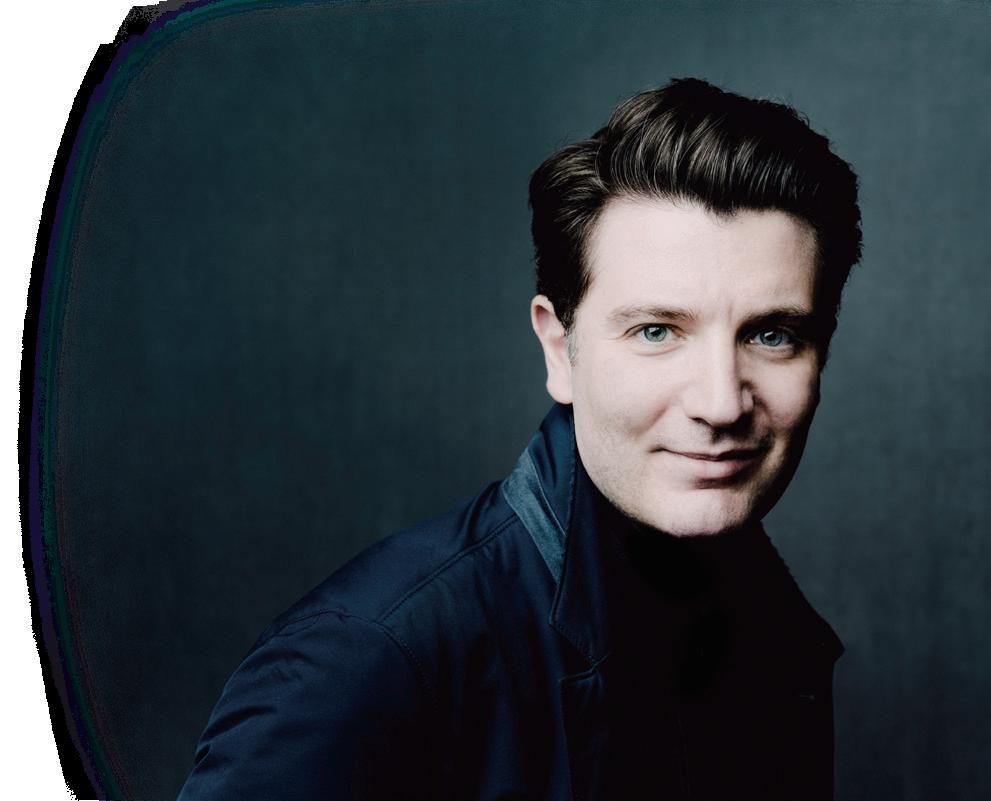
Welcome to the Grand Hall
Thank you for coming to this HKU MUSE event. To ensure that everyone enjoys the music, please switch off your mobile phones and any other sound and light emitting devices before the performance. Unauthorised photography and audio/video recordings in the Hall are prohibited. Enjoy the concert and come again.
PRESENTED BY FOLLOW US

D
SUPPORTED BY HKU MUSE
14 MAY 2023|SUN|3PM
Grand Hall, The University of Hong Kong
Daishin Kashimoto, violin
Alessio Bax, piano
MOZART Sonata for Violin and Piano No. 32 in B-flat major, K. 454
Largo - Allegro
Andante
Allegretto
BRAHMS Sonata for Violin and Piano No. 3 in D minor, Op. 108
Allegro
Adagio
Un poco presto e con sentimento
Presto agitato
- INTERMISSION -
PROKOFIEV Sonata for Violin and Piano No. 1 in F minor, Op. 80
Andante assai
Allegro brusco
Andante
Allegrissimo
Today's concert is recorded by RTHK Radio 4. Broadcast details will be announced later.
PROGRAMME
DAISHIN KASHIMOTO
Both as a soloist in concertos and as a sought-after chamber musician, Daishin Kashimoto is a regular guest of major concert halls around the globe. The tremendous wealth of experience gained in over 15 years as First Concertmaster of the Berliner Philharmoniker benefits him in his equally adept role as a soloist, where he plays a wide repertoire ranging from classical to new music.
Last season, Kashimoto performed Bruch's Violin Concerto with the Dallas Symphony Orchestra conducted by Fabio Luisi and appeared with the City of Birmingham Orchestra as well as the NDR Radio Philharmonic. In the summer of 2022, his tour of Japan with the Gürzenich Orchestra under the baton of François-Xavier Roth took him to renowned Japanese concert halls, including Suntory Hall in Tokyo. A highlight of this season is the world premiere of Toshio Hosokawa's new Violin Concerto with the Berliner Philharmoniker at the Philharmonie Berlin in March 2023, followed by the Swiss premiere at the KKL Luzern with the Lucerne Symphony Orchestra in June. An Asian
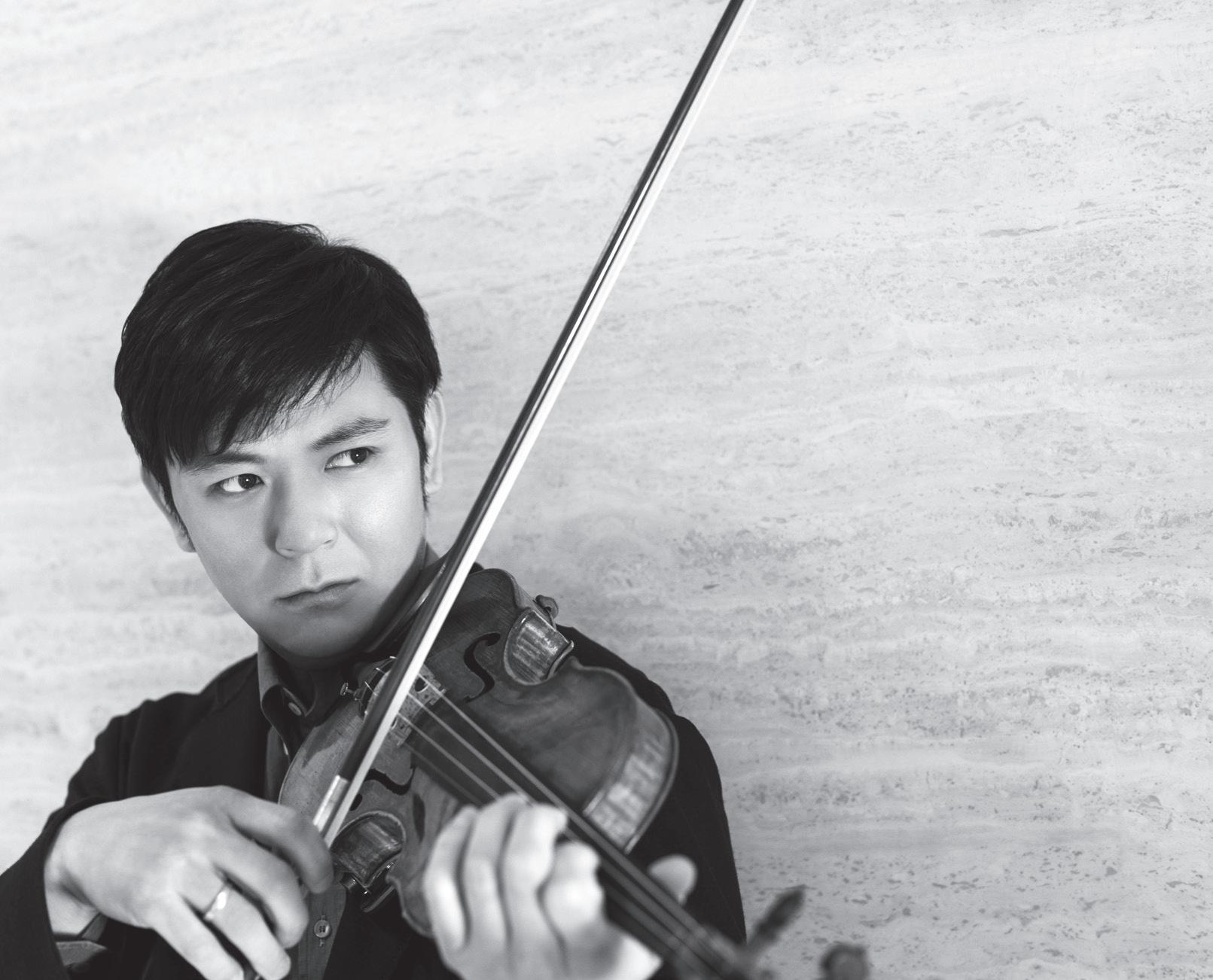
2
tour with the City of Birmingham Orchestra is scheduled for the end of the season.
Kashimoto has appeared with the NHK Symphony Orchestra, Boston Symphony Orchestra, Orchestre National de France, the Bavarian, Hessian, and West German Radio Symphony Orchestras, the Orchestre de la Suisse Romande, and the St. Petersburg Philharmonic Orchestra under conductors such as Mariss Jansons, Seiji Ozawa, Lorin Maazel, Yehudi Menuhin, Paavo Järvi, Myung-Whun Chung, Daniel Harding, and Philippe Jordan. He can also be heard as a soloist in concerts with the Berliner Philharmoniker. Past engagements include Mozart's Sinfonia Concertante at the Grafenegg Festival and Lucerne Festival, Prokofiev's Violin Concerto No. 1 under the baton of Sir Simon Rattle, and Tchaikovsky's Sérénade Mélancolique and Valse Scherzo at Berlin's Waldbühne under the direction of Andris Nelsons.
As a chamber musician, Kashimoto has appeared alongside Martha Argerich, Yuja Wang, Leif Ove Andsnes, Alessio Bax, Emmanuel Pahud, Itamar Golan, Tabea Zimmermann, Yefim Bronfman, Claudio Bohórquez, and Konstantin Lifschitz, among others. With Konstantin Lifschitz, he also recorded a highly acclaimed CD of Beethoven's Violin Sonatas in 2014. His other recordings include a CD of Brahms' Violin Concerto with the Staatskapelle Dresden under Myung-Whun Chung for Sony Music.
His parents introduced him to various instruments early on, with the threeyear-old opting for the violin and receiving his first lessons in Tokyo. After moving to the United States, Kashimoto was accepted, at the tender age of seven, as the youngest student to ever attend Julliard School's pre-college programme; at age eleven he transferred to the Lübeck University of Music under Zakhar Bron, before becoming a student of Rainer Kussmaul at the Freiburg University of Music from 1999 to 2004. He also had great success in major competitions as a teenager, taking first prize at the Menuhin Junior International Competition in 1993, the Cologne Violin Competition in 1994, and 1996 at the Vienna Fritz Kreisler and the Long-Thibaud Competitions. Kashimoto has been the artistic director of the Le Pont Music Festival in Ako and Himeji (Japan) since 2007. He plays a Guarneri del Gesu 1744 'de Beriot' violin kindly loaned by Asuka Corporation and its chairman Mr. Hikaru Shimura.
3
BIOGRAPHIES
ALESSIO BAX
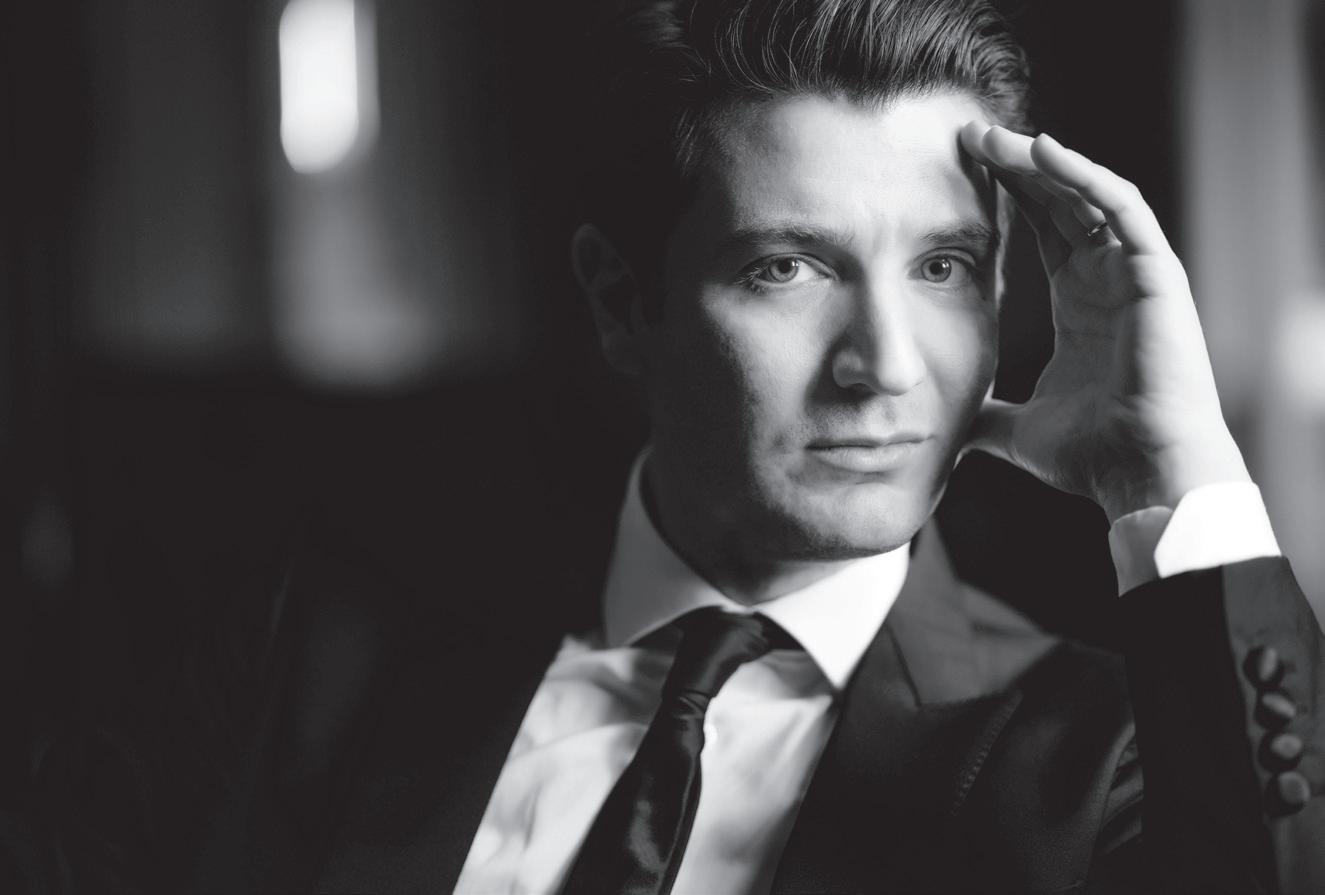
Combining exceptional lyricism and insight with consummate technique, Alessio Bax is without a doubt "among the most remarkable young pianists now before the public" (Gramophone). He catapulted to prominence with First Prize wins at both the Leeds and Hamamatsu International Piano Competitions, and is now a familiar face on five continents, not only as a recitalist and chamber musician, but also as a concerto soloist who has appeared with more than 150 orchestras, including the London, Royal, and St. Petersburg Philharmonic Orchestras, the New York, Boston, Dallas, Cincinnati, Seattle, Sydney, and City of Birmingham Symphony Orchestras, and the NHK Symphony in Japan, collaborating with such eminent conductors as Marin Alsop, Vladimir Ashkenazy, Sir Andrew Davis, Fabio Luisi, Sir Simon Rattle, Yuri Temirkanov, and Jaap van Zweden.
Bax constantly explores many facets of his career. He released his 11 th Signum Classics album, Italian Inspirations, whose programme was also the vehicle for his solo recital debut at New York's 92nd Street Y as well as on tour. He recently debuted with the New York Philharmonic, playing Schumann Concerto and the Seattle Symphony with Saint-Saëns' Second Piano Concerto and embarked on a trio tour of Spain with violinist Joshua Bell and cellist Steven Isserlis. Bax and his regular piano duo partner, Lucille Chung, gave recitals at New York's Lincoln Center and were featured with the St. Louis Symphony and Stéphane Denève. He has also toured extensively with Joshua Bell and presented the complete works of Beethoven for cello and piano with cellist Paul Watkins in New York City.
4
© Marco Borggreve
Bax revisited Mozart's K. 491 and K. 595 concertos, as heard on Alessio Bax Plays Mozart, for his recent debuts with the Boston and Melbourne Symphonies, both with Sir Andrew Davis, and with the Sydney Symphony, which he led himself from the keyboard. In addition, Bax made his solo recital debut at London's Wigmore Hall, and give concerts at L.A.'s Disney Hall, Washington's Kennedy Center, and New York's Carnegie Hall.
As a renowned chamber musician, he recently collaborated with Joshua Bell, Ian Bostridge, Lucille Chung, Steven Isserlis, Daishin Kashimoto, Sergei Nakariakov, Emmanuel Pahud, Lawrence Power, Jean-Guihen Queyras, Paul Watkins, and Tabea Zimmermann.
Since 2017 he has been the Artistic Director of the Incontri in Terra di Siena Festival, a Summer Music Festival in the Val d'Orcia region of Tuscany. He appears regularly in festivals such as Seattle, Bravo Vail, Salon-de-Provence, Le Pont in Japan, Great Lakes, Verbier, Ravinia and Music@Menlo.
In 2009, he was awarded an Avery Fisher Career Grant, and four years later he received both the Andrew Wolf Chamber Music Award and the Lincoln Center Award for Emerging Artists.
Bax's celebrated Signum Classics discography includes Beethoven's 'Hammerklavier' and 'Moonlight' Sonatas (a Gramophone 'Editor's Choice'); Beethoven's 'Emperor' Concerto; Bax & Chung, a duo disc with Lucille Chung; Alessio Bax Plays Mozart, recorded with London's Southbank Sinfonia; Alessio Bax: Scriabin & Mussorgsky (named 'Recording of the Month' by MusicWeb International); Alessio Bax Plays Brahms (a Gramophone 'Critics' Choice'); Bach Transcribed; and Rachmaninov: Preludes & Melodies (an American Record Guide 'Critics' Choice' 2011). Recorded for Warner Classics, his Baroque Reflections album was also a Gramophone 'Editor's Choice'. He performed Beethoven's 'Hammerklavier' Sonata for Daniel Barenboim in the PBS-TV documentary Barenboim on Beethoven: Masterclass, available on DVD from EMI.
At the record age of 14, Bax graduated with top honors from the Conservatory of Bari, his hometown in Italy, and after further studies in Europe, he moved to the United States in 1994. A Steinway artist, he lives in New York City with pianist Lucille Chung and their daughter, Mila. He was invited to join the piano faculty of Boston's New England Conservatory in the fall of 2019.
5
Music in Words with Daishin Kashimoto & Alessio Bax

14 MAY 2023 | SUN | 1:15PM
Rehearsal Room, LG1/F, Run Run Shaw Tower, HKU
Moderator: Prof. Daniel Chua, Chair Professor of Music, HKU
Before presenting us three violin and piano sonatas by Mozart, Brahms, and Prokofiev, Daishin Kashimoto and Alessio Bax join Prof. Daniel Chua to discuss the programme, their musical journeys, and the joy of playing chamber music.
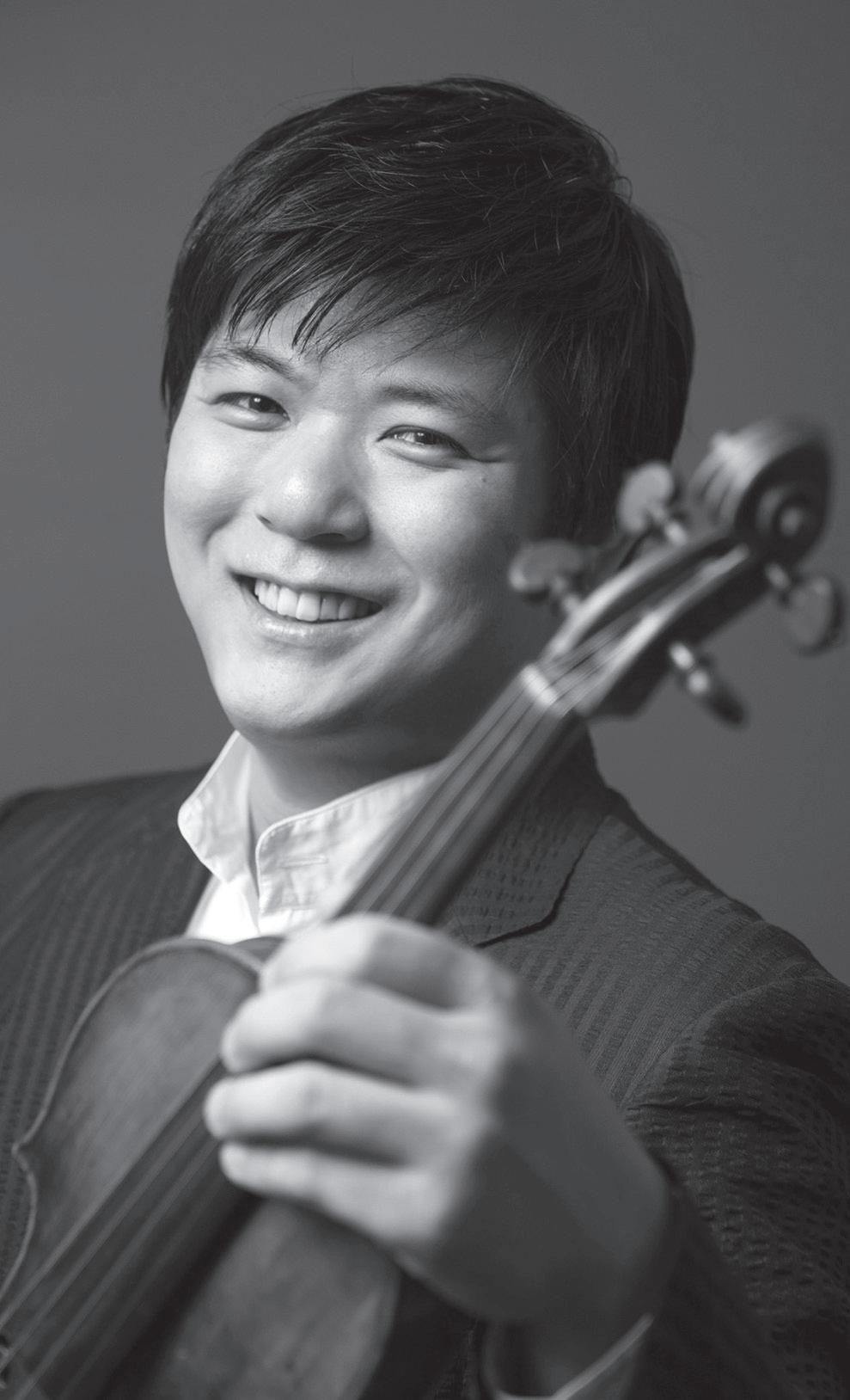
6
IN
MUSIC
WORDS
HK PHIL HKU MUSE
Orchestral Spotlights 聚焦管弦
The Hong Kong Philharmonic Orchestra, in collaboration with HKU MUSE, is delighted to showcase the horns of the HK Phil, as part of this chamber music series spotlighting different sections of the orchestra.
香港管弦樂團聯乘香港大學繆思樂季(HKU MUSE)呈獻一系列現代室樂音 樂會,聚焦樂團不同聲部。今次主角港樂圓號小組成員,將透過精挑細選的 曲目為大家展現圓號的音色和技巧。
7 $250 Available at ART-MATE.NET Full-time students, citizens aged 60 or above & people with disabilities 50% off www.hkphil.org HKU GRAND HALL 香港大學李兆基會議中心大會堂 www.muse.hku.hk 04 JUN 2023 SUN 3PM
NOTES
Sonata for Violin and Piano No. 32 in B-flat major, K. 454
WOLFGANG AMADEUS MOZART (1756-1791)
Mozart's Sonata for Violin and Piano No. 32 in B-flat major, K. 454 was composed in Vienna in April 1784. Two months earlier, in February, the composer began to keep a catalogue of his own music, which suggests that he was becoming aware of his possible place in history. The violin sonata was subsequently published by the art and music publisher Christoph Torricella as a collection of several sonatas, along with the Piano Sonatas K. 284 and K. 333.
Mozart's ability to establish himself in Vienna was a result of hard work and reckless bravery, but his success was not without cost. A native of Salzburg, Mozart used to work for Hieronymus von Colloredo, Prince-Archbishop of Salzburg. His job promised some stability, but it also guaranteed a poor working environment and a lack of artistic freedom. Working as a freelanced composer in Vienna represented both a huge risk and his only chance for success. He gambled and won. But in Vienna, he had to compose at a staggering speed, so fast that he sometimes could not afford the time to write on paper music that was completed in his head. He would complete works only hours before scheduled concerts, leaving no time for orchestras to rehearse. And he would omit the preparation of the piano score, if he was playing the piano part himself. The former happened to the first performance of his Piano Concerto in D minor, K. 466; and the latter, to the premiere of the present Violin Sonata in B-flat major, K. 454.
In early 1784, the 23-year-old Italian violinist Regina Strinasacchi visited Vienna, and she asked Mozart to compose a piece for her forthcoming concert. Mozart accepted her request and completed a sonata, mostly in his head, on 21 April. The sonata premiered on 29 April at the Kärntnerthor Theatre in Vienna, with Strinasacchi on the violin and the composer on the piano. During the performance, it became apparent that Mozart had not actually put the piano part on paper; to avoid embarrassment, he was simply having a blank piece of paper stationed on the piano as he played. According to Mozart's wife Constanze, Emperor Joseph II, who attended the concert, saw Mozart's blank paper through opera glasses and later questioned him about it.
The sonata consists of three movements, all of which explore textural possibilities through a delicate balance between the violin and the piano. The first movement starts with a slow introduction, in which harmonic
8
PROGRAMME
emphasis is placed on the secondary dominant, creating a recurring sense of uncertainty and longing. The main body of the movement is fast-paced, owing to a fast and lively first theme, a rather non-contrasting second theme, and a relatively short development. The slow second movement resembles an operatic aria and is in the subdominant key of E-flat major. Its middle section includes a series of bold modulation that creates a strong sense of intensity. The movement is a close resemblance to the slow movement of Piano Sonata in B-flat major, K. 333, which was published at the same time. The finale is an elaborated setting in sonata-rondo form.
Sonata for Violin and Piano No. 3 in D minor, Op. 108
JOHANNES BRAHMS (1833-1897)
In the second half of the 19th century, Europe's musical communities were divided into two opposing camps. Richard Wagner and Franz Liszt represented the progressives, who advocated new music at the expense of established musical idioms such as defined tonality on a triadic basis and lyricism based on functional forms. Among their most worthy opponents was Johannes Brahms, a 'retrospective' composer who was a generation younger. Brahms drew frequently on elements from the past, expanded their usage in more updated manners, and thus became an example for future composers who hoped to cultivate their voices from previous elements. In hindsight, his retrospective effort was exhibited most clearly in his larger works like symphonies, concertos, and extended choral works and sonatas. Several years before he died of cancer in 1897, however, he departed from large-scale compositions and focused on shorter pieces with more intimate tones. Sonata for Violin and Piano No. 3 in D minor, Op. 108 was one of his last compositions before that departure. Completed in 1888, the sonata is the last of Brahms' three surviving violin sonatas, and it is considerably different from the previous two in mood and construction.
Brahms was critical of his violin sonatas. He appeared to have composed a few earlier in his life, with the first one dated as early as 1853, when he was 20. But he destroyed them all. All his three surviving violin sonatas were composed after he resigned as director of Vienna's Gesellschaft der Musikfreunde (Society of Friends of Music) in 1875, focused on composing, and went through a stylistic transformation as a composer—a transformation that bore fruits in
9
many of his most popular works, including all four of his symphonies, Violin Concerto in D (Op. 77), and Piano Concerto in B-flat (Op. 83).
Set in the key of D minor (often a stormy key for Brahms), this final violin sonata surpasses the composer's previous two (in G major and A major) in dramatic vigour and intensity. It is also larger in scale, suggesting that it is likely to be for a larger audience rather than for the use of private chambers, which seems to be the case for the two earlier sonatas.
The piece was dedicated to pianist and conductor Hans von Bülow, and was premiered in Budapest in 1888 with Jenő Hubay on the violin and the composer on the piano.
This sonata consists of four movements that have no apparent connections. However, as many have pointed out, the movements create a subtle sense of unity that seems to have elevated classical forms to a new height. For example, the prominent 19th-century critic Eduard Hanslick wrote, "What is admirable [about this sonata] is… the consistent atmosphere that binds the whole sonata together like a golden ring. Each of the four movements tells us something different, but we can still feel that each occurrence is connected and is inseparable from its narrator." In sonata form, the fast first movement opens with the violin's emotional first theme, which is interlocked with the piano's whispering and syncopated octaves. A sense of unsettlement is embodied in the development section, because its tonally unstable melodies are set almost entirely on a repeated note of A in the bass. The movement ends with a prolonged struggle between D minor and D major, before finally resting on the latter. The slow second movement is lyrical, gentle, and relatively short. The movement's being in D major creates an impression that it is an extension of the first movement, and that the previous struggle is now overcome through a form of fairy tale resolution. The third movement is fast, witty, and scherzo-like. The violin part appears frequently in syncopated forms, and it is often intimately intertwined with the gentler piano part to create a sense of contradiction—a sense that is somewhat intensified by the fact that the movement is set in the distant key of F-sharp minor. The finale opens with a struggle between G minor and D minor that fails to resolve until near the very end. In between the opening and the end, a number of rhythmic and melodic motives are introduced in various keys and tempi; meanwhile, colourful passages reminiscent of the composer's famous Hungarian dances exchange almost casually with chorale-like melodies.
10
Sonata for Violin and Piano No. 1 in F minor, Op. 80
SERGEI PROKOFIEV (1891-1953)
Sonata for Violin and Piano No. 1 in F minor, Op. 80 is one of Prokofiev's darkest and most ominous works. The dark mood seems reminiscent of the composer's declining career due to political censorship. When he started the work in 1938, he was widely acclaimed in Europe, in the United States, and back home in Russia. He travelled extensively and he was keen on trying out highly diverse artistic materials. But when he finished the piece in 1946, he was already subjected to severe government censorship and travel restriction, which soon also led to financial hardship.
Prokofiev and his family relocated permanently to the Soviet Union in 1936, against the advice from other Russian exiles such as Igor Stravinsky, who considered him 'politically naïve'. At first, his relocation seemed to have caused no harm to his life and career: he was free to perform abroad (which he did in 1937); he continued to create quality works such as the symphonic fairy tale Peter and the Wolf and the ballet music for Romeo and Juliet; not even Adolf Hitler's invasion of Russia in 1941 caused him significant harm, as he was quickly relocated to safety by Stalin, along with other top artists and performers of the Soviet Union. But slowly, his circumstances began to deteriorate. At the start, he suffered only from occasional restrictions (for example, his version of Romeo and Juliet had to be rewritten after its failure to gain government approval); but soon, he began to feel the pressure to compose only music deemed patriotic. His travel right was cancelled. It was only later when he realised that censorship was a national policy, and that he was only joining other victims such as Dmitri Shostakovich and Aram Khachaturian.
When the Violin Sonata in F minor was finally completed in 1946, it was premiered in the Moscow Conservatory on 23 October 1946 upon government approval. The work even received an official recognition, the Stalin Prize. David Oistrakh, often considered the best Soviet violinist of the time, and Lev Oborin, the winner of the first Chopin Competition in Warsaw in 1927, were appointed to perform the work. Prokofiev was allowed to coach the rehearsal personally.
The Sonata includes many sonically shocking moments. During the rehearsal, Lev Oborin expressed his worries about the violin being overshadowed by certain flamboyant pianistic passages in the score. Prokofiev responded that
11 PROGRAMME
NOTES
those passages must be sufficiently aggressive to make the audience "jumping to their feet", and violent enough to make people ask if the players are "out of their minds". The work contains four movements, each of which is of similar playing time. The slow first movement opens with an introductory passage in shifting time, which alternates between 3/4 and 4/4. The movement features a short recurring piano melody characterised by falling fifth intervals in octaves, which also serves as a ground bass that supports the violin part. The movement closes with a series of fast and sliding scales played by the violin. The composer was reported to have called the first movement a long introduction to the second movement, which is fast and somewhat abrupt in character. Scherzo-like, it has a percussive main section and a tranquil middle section. The third movement is lyrical, and it is formulated by a combination of flowing lines, delicate tremolos, and expressive melodies played on muted strings. The effect of music is both mysterious and luminous. The finale is in a shifting metre of 5/8, 7/8, and 8/8. Its rhythmic progression resembles that of a folk dance, and its articulation that of a toccata. Like the first movement, the finale ends with a series of sliding scales played by the violin. When asked about those slithering scales at the end of both movements, the composer referred them to as "wind passing through a cemetery".
Programme notes by Chung-Kei Edmund Cheng PhD in Musicology, HKU
12
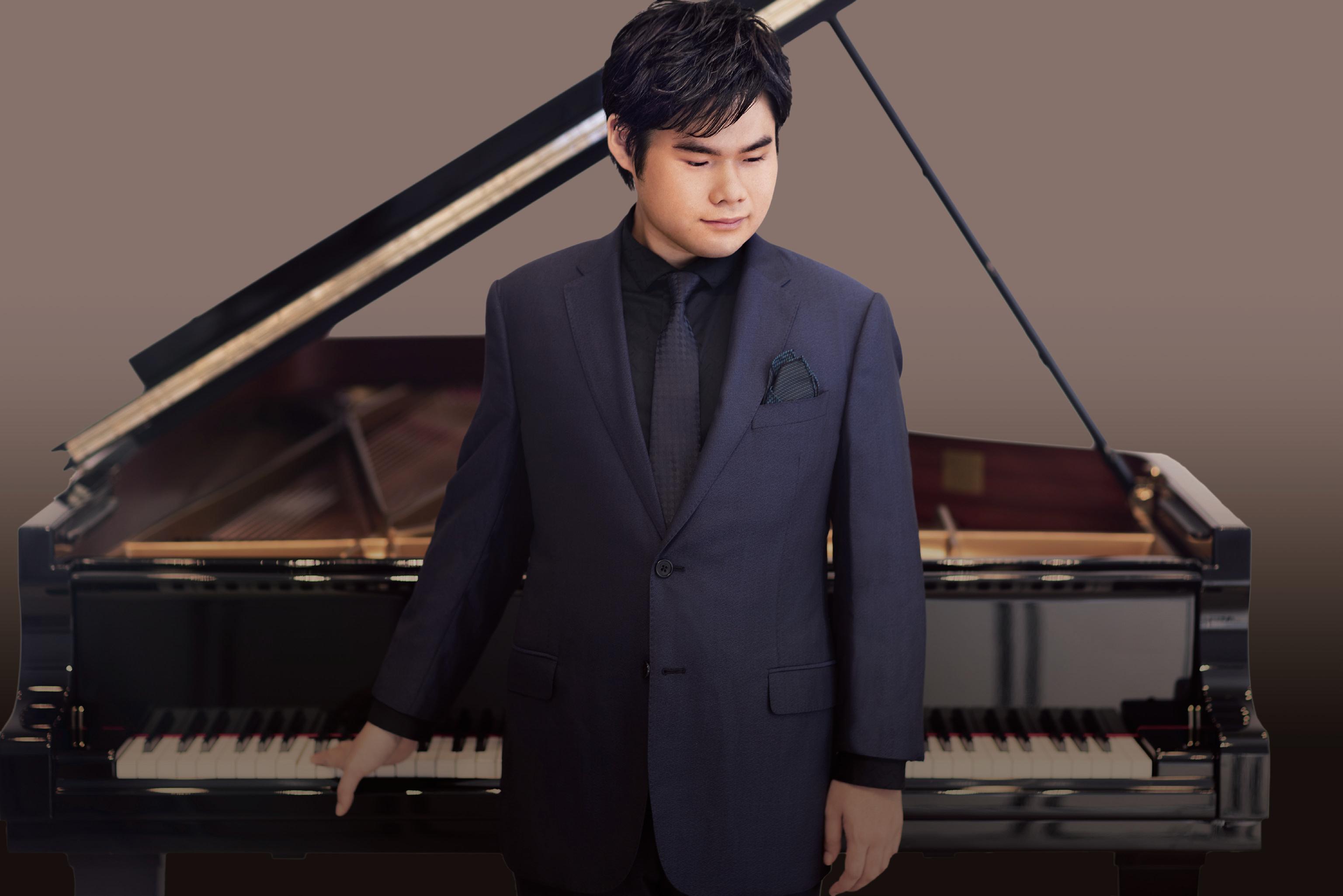


13
14
15
16 C M Y CM MY CY CMY K
A SOURCE OF INSPIRATION th

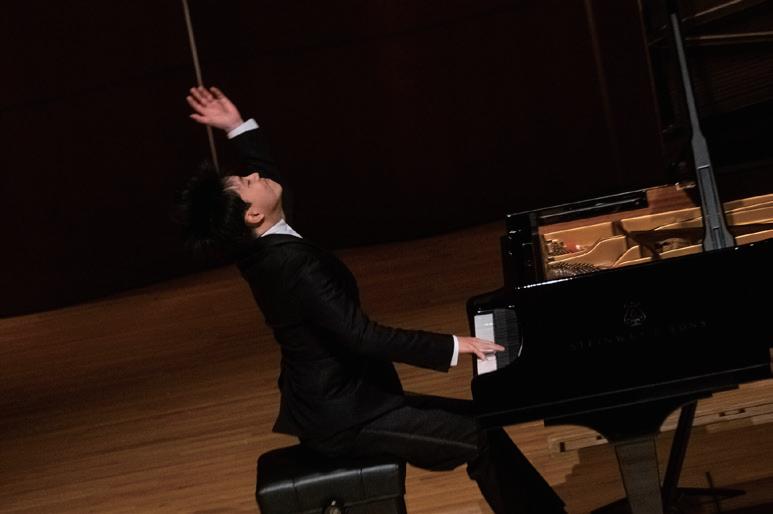
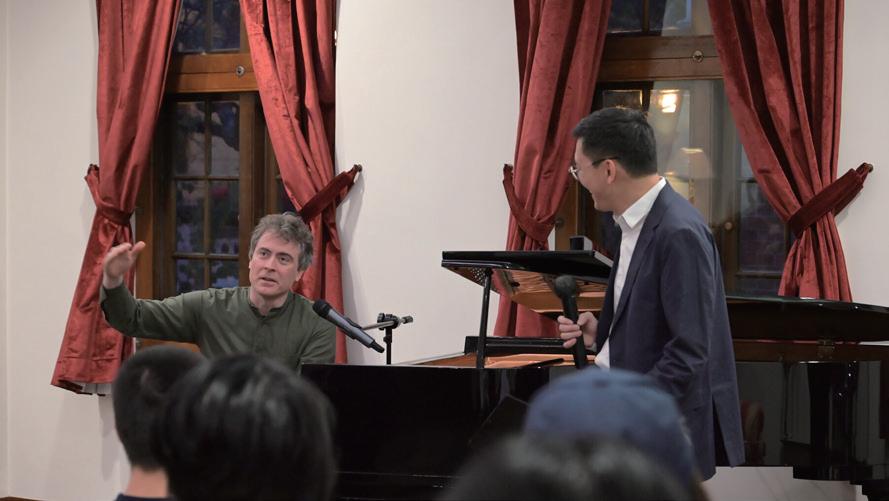
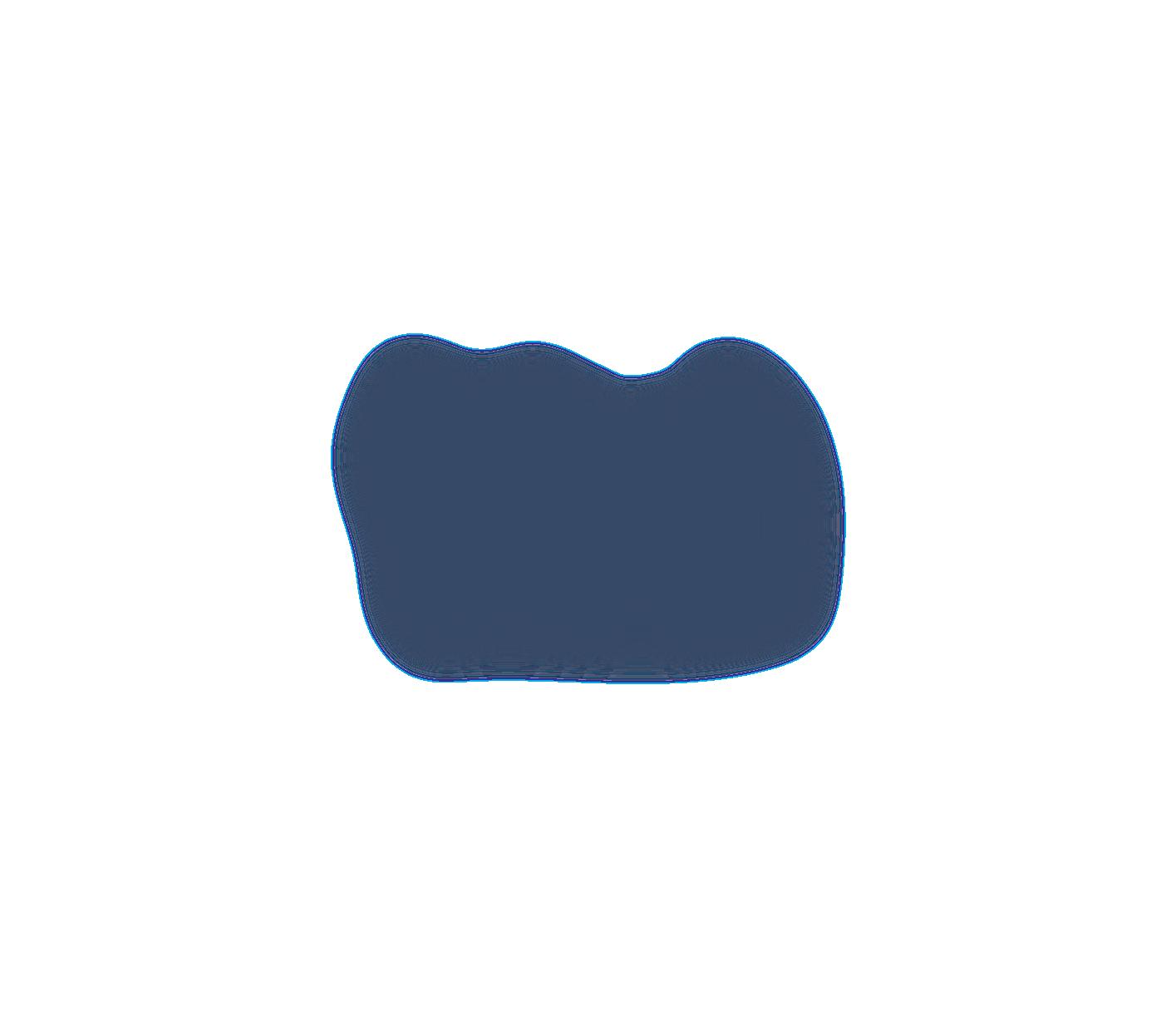
Thank you for being a part of our 10 season celebration! Look forward to creating many more unforgettable MUSE moments together!




